Esashimaru, whose date of sinking may have been wrong
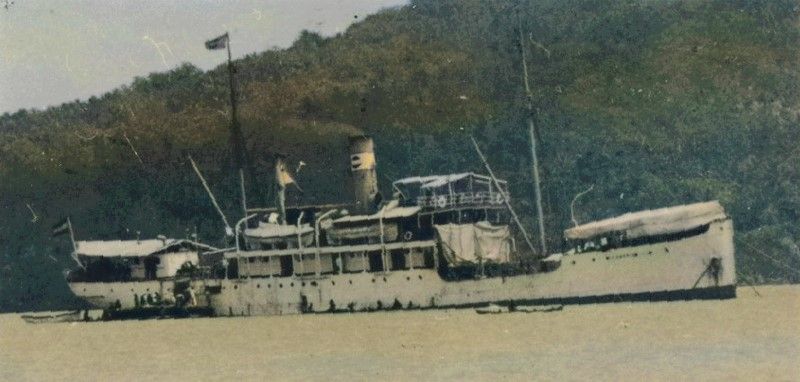
Anyone who knows me knows that Liao Yingyan was originally a lazy person who devoted himself to fishing. Since reading the "Penghu County 2010 Documentary Manual" in 2015, he found that the local official historical data about the World War II air raids in Penghu was full of errors, and only then did he take the time to sort out these materials. .
How bad is the quality of these things? To put it simply, you will always find new problems when you think "this should be right". While historical research is something of excellence (and it wasn't my job in the first place) it's always possible to be suspicious, but if an existing publication is full of misleading information, the whole thing just keeps rubbing off. For example, the protagonist of this article, Echamaru, is a case where the official may have written wrong when it was sunk.
▌Before copying something, ask the answer first, right?
The matter begins with the "2010 Penghu County Cultural Assets Handbook", which mentions that " ...(1945) July 11, 1945, the U.S. military plane sank the Penghu-Gao traffic vessel "Echamaru" docked at Kaohsiung Port. Shipping between Qi Ma Gong and Kaohsiung was interrupted ” (p.130). However, this statement cannot be found in "Air Raid on Formosa" (Zhang Weibin: 2015, p.336-341). U.S. Navy and Army fighter jets never flew to Kaohsiung Port and Zuoying Military Port to bomb from July 9 to 12, 1945, but only on July 11 strafed small boats in the coastal waters between Taiwan and Penghu. So the question arises: How did "Echamaru" sink in Kaohsiung Port for no reason?
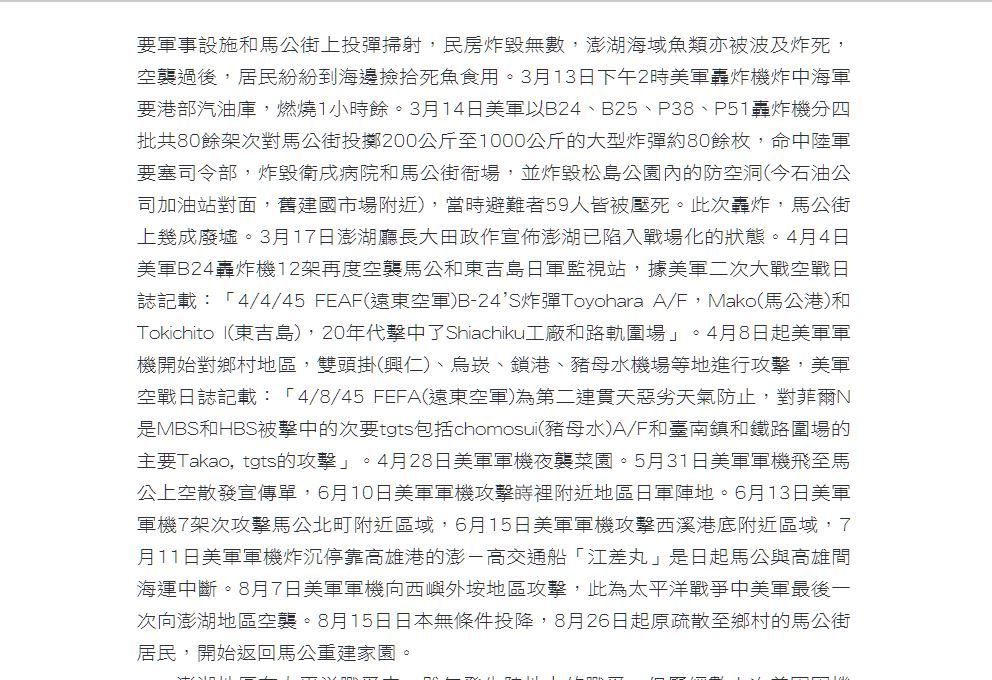
In view of the many doubts about this record, I followed the line to investigate the statement that "Echamaru was sunk on July 11, 1945" in the "2010 Penghu County Cultural Assets Handbook", and found that it was an editor surnamed Chen who was one of the writing team of this book. Quoting "Magong Shi Zhi" (Cai Pingli, 1984: 157). However, Mr. Cai Pingli, the editor of "Magong City Chronicle", completed this book in 1984, when personal computers were not widely used in those days. With the huge length of "Magong City Chronicle" and the physical strength and eyesight of Mr. Cai who was over 70 years old at that time, It is impossible to guarantee that there will be no minor typos.
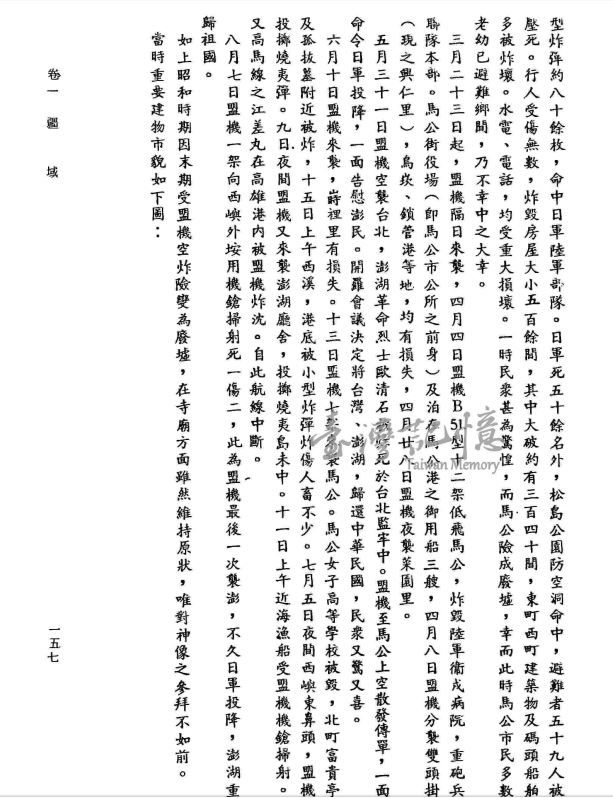
I pushed back and searched for two heavyweight literatures that Cai Pingli might have referenced, but there was no result. One is the "Taiwan Provincial Bulletin" (Lin Xiongxiang et al., 1951), which Lin Xiongxiang majored in, which did not mention the US air raid on Kaohsiung Port on July 11, 1945. The second is that Yan Qishuo, a literati from Penghu who kept a diary every day at the end of World War II, did not write about it in his poetry collection "The Weeds in the Mean Alley" (1969). Therefore, Cai Pingli's claim that the source is unknown has become an orphan in the data citation. All the known data cannot support this statement, and the simplest inference is: Cai Pingli made a typo.
In other words, the editor surnamed Chen of the "2010 Penghu County Cultural Assets Handbook" probably saw this statement in 2009 and 2010, and directly included it in his own manuscript without verification. As for the reason for doing so Is it a pleasure to see the hunter or a momentary negligence? To or not to? I'm not the roundworm in his stomach, it's hard to say.
▌After changing hands several times, 1945/3/29 was sunk
The whole mystery of the sinking of Esashimaru can only be solved thanks to the pictures and texts published by Mr. Yao Kaiyang in the "Taiwan Maritime Museum" recently.
We first used Google Translate to find the Japanese phonetic Esashi Maru of "Esashimaru". Following this clue, we found the German Friedrich Krupp AG (Friedrich Krupp AG) in 1904 for the company Jaluit Gesellschaft Design of the mail ship Germania . The ship's owner, Jaluit Gesellschaft, was a colonial trading and agricultural company at the time, headquartered in Hamburg, so Germanina's mission was to commute in the tropical waters of the Pacific Ocean, carrying passengers and cargo.
Completed in 1906, Germania is a 1,096 gross tonnage (GRT), steel hull, 210'6" long, 32'7" wide, 14'6" deep, three-stage expansion steam engine, single shaft Single propeller with a top speed of 11.25 knots. After the outbreak of the First World War, she was captured by Australia in Sydney in August 1914. She changed her name to Mawatta the following year, and was leased to Burns Philp & Co. on a regular basis. In 1920, she was sub-leased to James R. Patrick. Some time later, he finally bought the ship in 1925 and carried out refurbishment works at the Cockatoo Island shipyard in Sydney, Australia, including rebuilding the mid-hull section.
In 1928, the refurbished Mawatta was sold to the Société de Tour des Côtes in Nouméa, until 1937, when the ship was too old and too expensive to operate. Since then, Mawatta has been resold to Hong Kong-based Moller & Co., renamed Elsie Moller.

On December 5, 1941, Elsie Moller was dispatched by the British from Shanghai to Hong Kong in view of the possibility that Japan might start a full-scale war against the United Kingdom and the United States in a short period of time. It was called "Echamaru", and since then it has become a transportation ship between Penghu and Kaohsiung. Even in the "October 1944 "October 1944 Action List for Designated Ships (5) ", you can still see the record of the regular ship schedule of Esashimaru, which proves that she was indeed a regular ship on the Gao-Peng route at that time, and It also escaped the large-scale bombing of the US Army's 38th Task Force during the first air battle, and was active at sea until the end of October 1944 at the latest, and the captain at that time was Hong Zhongrong.
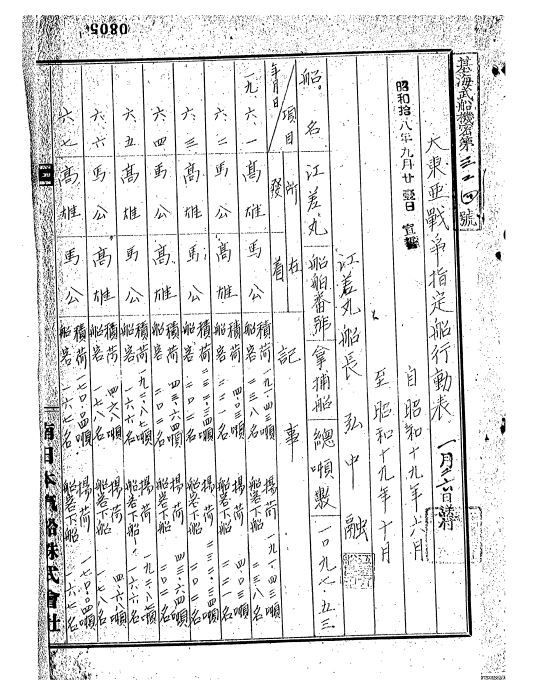
So, when exactly was "Esashimaru" sunk? We have three records that can be cross-verified.
First, according to information on foreign websites , she was sunk by the US air raid on Kaohsiung on March 29, 1945. There is also a corresponding record in "Air Raid on Formosa": On the same day, the 64th, 65th, and 403th Squadrons of the 43rd Bomb Group of the US Army's Fifth Air Force dispatched 19 B-24s with 1,000-pound bombs to bomb the Zuoying Naval Base. Hit several Japanese warships. Perhaps Esashimaru also suffered from pond fish on this day.
Second, according to Lu Yinsheng, a literary and historian, his father took the " Echamaru " transportation boat from Magong, Penghu, in 1945, but the boat ran aground in the sea off Canting Island, outside Budai, Chiayi, due to the low tide. Aerial view, dangerous situation, and finally finally transferred to Zuoying to get out of trouble. In other words, Esashimaru still existed at some point in 1945.
Thirdly, according to the post-war salvage records obtained by Mr. Yao Kaiyang from the National Army archives, there are also records showing that "the Echamaru coal bunker has been cut off, the bow of the ship has been cut off and two-thirds have been picked up, and the tank is scheduled to float after being sealed for a week. dragged away." (Report date 31 December 1949). It can be seen that Esashimaru still did not last until the end of the war, and was sunk by the dock in Zuoying Port before that.
Therefore, putting together each of the previous clues, it is true that Esashimaru was bombed and sank in Zuoying Port, not elsewhere; and the time when she was actually bombed and sank is more reliable on March 29, 1945. Cai Pingli (1984) ) of July 11 is quite possibly a clerical error . So, where did the July 11 error come from? It is possible that the mercenary ship "Third Toyo Maru" departed from Makai to Kaohsiung on June 11. The freighter sailed out of Magong Port on the same day and hit a reef off Zuoying on the 12th. It was hit by an air strike by the US military and had to abandon the ship. Afterwards, the weapons and materials on the ship were recovered on the 17th. On the 18th, the immobile ship was hit again by the incoming US plane, causing a fire and sinking. I personally speculate that Cai Pingli may have recorded the third Toyomaru that never came back after leaving Magong on June 11. The clerical error was recorded as Echamaru, which was sunk in Zuoying Port, and the time was recorded as July 11. .
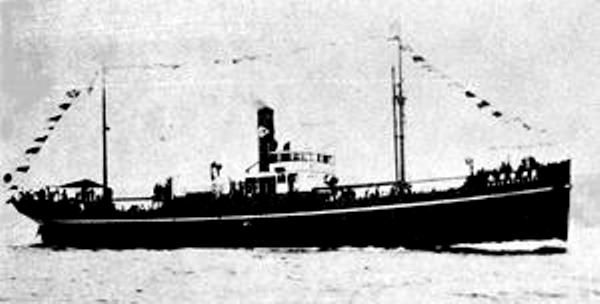
A bad debt that has dragged on for almost 40 years is finally resolved at this time. The description of the Penghu air raid by one of the editors of the "2010 Penghu County Cultural Assets Handbook" made people not even know where to complain, and it also dragged down several other serious writers in the writing team. Maybe it's faster to cut down the whole book and retrain it.
This article was also published in Fanggezi - Liao Yingyan
Like my work? Don't forget to support and clap, let me know that you are with me on the road of creation. Keep this enthusiasm together!



- Author
- More